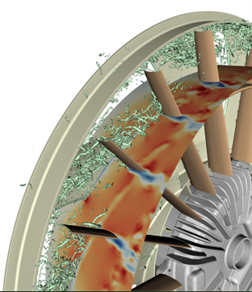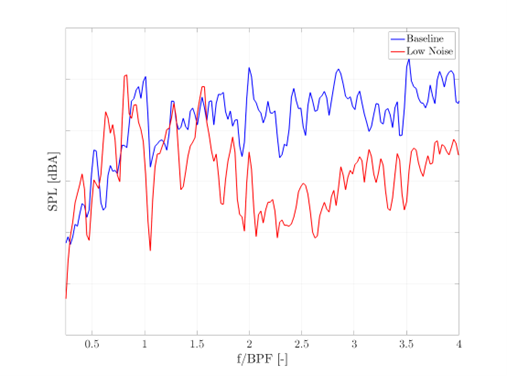The focal point of this project lies within the domain of engine cooling fans within the automotive sector. These fans, integral to the thermal management of automotive powertrains, wield considerable influence over vehicle performance and efficiency. However, their operation often introduces undesirable noise levels, prompting our investigation into the underlying sources of aeroacoustics emissions across several operational conditions. Since the automotive market is gradually shifting through electric vehicles, the relative importance of the sound sources from the engine cooling fans become increasingly prominent. Furthermore, strict noise regulations are arising periodically, encouraging both research and industry to focus on this aspect.
Therefore, our research involves computational aeroacoustics for automotive engine cooling fans, leveraging the capabilities of the Lattice Boltzmann Method (LBM) implemented in the Very Large Eddy Simulation (VLES) formulation within the commercial software suite PowerFLOW by SIMULIA. Its application is particularly tailored for aeroacoustics applications since it is can directly predict the acoustic field within the flow field, thus not requiring any further analogy.


Our aim is to firstly identify and analyse the relevant noise sources in industrial-grade engine cooling fans, further focusing on configurations featuring upstream radiators, which introduce additional complexity to the system dynamics. Through meticulous examination of the aerodynamic and acoustic characteristics of these fans, our primary goal is to deeply investigate mechanisms governing noise generation and propagation.


Moreover, we aim to develop noise reduction strategies involving innovative approaches and methodologies such as optimization frameworks within gradient-based formulations and genetic algorithms.

By mitigating noise pollution while maintaining or even enhancing system performance, our research endeavours to usher in a new era of quieter, more efficient automotive cooling systems, thereby contributing to improved driving experiences and environmental sustainability.
